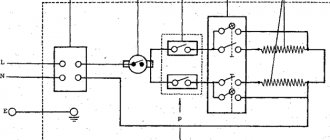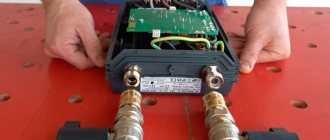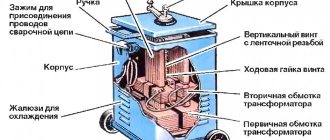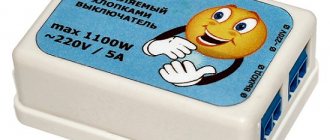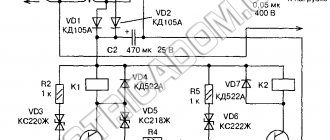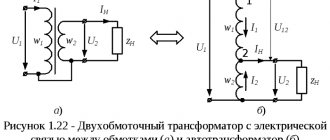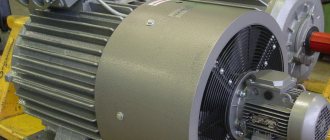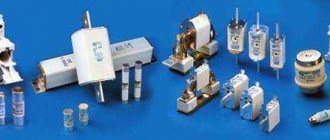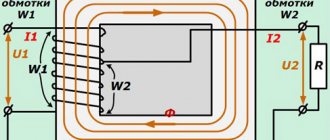Owners of private houses and apartment owners left without hot water due to seasonal renovations solve this problem on their own. To do this, they buy and install special equipment. Specialists from the Kvanta + online store from Tyumen can help them. Managers will tell you how an instantaneous water heater or boiler works and will suggest a suitable model from a trusted manufacturer.
A instantaneous water heater is an alternative source of hot water.
General information about instantaneous water heater
This is a high-power device, not equipped with a storage tank, that increases the temperature of the liquid as it passes through the heating module. The equipment is a structure with a heating element inside or outside. In addition to the heater, the device includes sensors and thermostats to control the operating mode.
Main types
The classification of main devices looks like this:
- Gas. They are chosen mainly by owners of cottages and apartments equipped with AGV. Such heaters are inexpensive, their maintenance is simple, although this requires a trained specialist, and energy prices are low. However, they require the installation of effective ventilation, are explosive due to technical faults and are demanding on water pressure - at least 1.5 l/min.
- Electrical. The most popular among buyers. They are chosen for their ease of installation and operation, and the availability of several configuration modes.
- Diesel, wood and coal. Such devices are not in demand due to inconvenience in operation.
Instantaneous water heater – electric model.
How does a flow boiler work?
The device differs from a storage device only in the absence of a tank for storing water. The housing contains a flow-through heating element through which a flow of water passes. It heats up quickly, which allows you to get hot water as soon as you open the tap.
Inside the case there are:
- Heating element in a protective housing . Most often this is a tube made of plastic or brass. The advantage of such a heater is that it is not susceptible to scale.
- Power regulator . Switches work between heating elements, is a button.
- Relays and sensors . The latter are responsible for the heating temperature, control of the amount of liquid, and protection against switching on without water. The relays are activated when the temperature is exceeded, turning off the heating element.
Consider the electrical diagram of the Thermex boiler:
As you can see in the picture, all nodes can be found and replaced if necessary.
Design features
The main feature of instantaneous water heaters is the absence of a storage tank to create a supply of hot water and a system for maintaining the temperature inside.
Types of heating elements
Types of heating module for electric models:
- A bare coil placed inside a plastic tube. In this case, the case is small in size, has low heating and low performance. After turning off the power, the liquid cools quickly, preventing deposits from forming on the inner surface.
- Tubular electric heater, or heating element. It is the same spiral placed in a copper or brass tube with quartz sand as an insulator. From the point of view of electrical safety, such models are reliable, but slow cooling of the water contributes to the formation of scale, which settles on the heater itself and eventually leads to its burnout.
Gas instantaneous water heaters are often combined with 2-circuit heating boilers. They have a burner installed as a heating element.
Instantaneous water heater for the bathroom - gas modification.
Flow sensor
The sensor can be electronic or mechanical. Serves for timely supply of power to the water heater at the beginning of liquid movement. Equipment equipped with such a device operates automatically. There are devices where a membrane is installed. Their disadvantage is that at low pressure it does not always work, so the device does not turn on.
Overheat sensor
Necessary to turn off the unit when the temperature rises above the set one. Most often, values from +60 °C are chosen as the limit.
With the sensor, the manufacturer installs a warning light that notifies the user that the water heater is not working.
Control type
The controls are used to change the operating parameters of the device; they represent several regulators. They operate using a hydraulic or electronic circuit.
In the first case, the heating element is turned on immediately at maximum power, regardless of the set mode. In the second case, multi-stage modules with a smooth change in heating power are used. For this purpose, sensors and a microprocessor are used, which reads the information and makes adjustments when the deviation from the nominal value is more than 1 ° C.
Instantaneous water heater with electronic control circuit.
RCD
The protective shutdown device is located outside the body of the instantaneous water heater and serves to open the circuit in the event of leakage currents being detected. This ensures that the owner of the premises is protected from electric shock in the event of a zero break or a phase breakdown on the housing or a grounded pipe. Most often, residents lay a separate line to power a powerful water heater, to which they connect an RCD.
The device itself does not protect equipment from power surges or short circuits. Therefore, a circuit breaker or fuse is necessary in such a circuit.
Features of choosing flow-through models
Due to the diverse requirements of users and the high demand for water heating devices, the market is filled with models with different technical characteristics.
To decide which instantaneous water heater from those provided is better and more suitable specifically for you, pay attention to criteria such as power, performance and the presence of additional functions.
Criterion #1 - power and performance parameters
Power is a decisive criterion that affects the amount of hot water heated in a certain period of time. If you need to quickly take a shower or cook dinner, a low-power device that can heat 3-5 liters of water within a minute is enough.
Heating is carried out quickly, in just 20-25 seconds. For increased needs, we recommend taking a closer look at more powerful models.
Using the table, you can determine your family's hot water needs. The number of family members and the number of water points are taken into account
To calculate power you can use the generally accepted formula:
P = Q x (t1 - t2) x 0.073,
Where:
- P (W) - power;
- Q (l/min) - hot water flow;
- t1 (°C) — required hot water temperature;
- t2 (°C) — water temperature in the water supply;
- 0,073 - correction factor.
In order not to make complex calculations, look at the manufacturer’s recommendations - the purpose of the water heater is usually indicated there.
For example, devices with a power of up to 8 kW are recommended to be installed in dachas where there is no need for constant heating. An average temperature of 40-50 °C is enough to quickly wash or wash several dishes.
If you want to purchase a serious device for constant maintenance of your home or apartment, consider models with a power of at least 20 kW. When choosing, try to take into account the installation locations of water points.
If the shower and sink are located next to each other through the wall, it is possible to install one product far from each other - you will have to buy two low-power devices or one more powerful pressure water heater.
The model for the dacha is an instantaneous electric water heater Kospel EPJ 3.5 Optimus. Power – 5.5 kW; voltage – 220 V; productivity – 2.7 l/min (at a temperature of 30 °C); equipped with thermal protection and a tap with water heater Kospel EPJ 3.5 Optimus cutter
A few words about the weakest models, whose power does not exceed 3-4 kW. They are designed mainly for use during warm periods, when the average water temperature in the mains is 18-20 °C.
If you want to take a hot shower in winter (just during the period when accidents often occur), choose models with a power of 6 kW and above.
The power and performance of the device are indicated in the technical data sheet of the products, as well as on the price tags in the explanatory descriptions. On online store websites, exact data can be found in the “Technical Specifications” section.
Criterion #2 - control types and modes
Despite the simplicity of the design, flow models are divided into two categories based on the type of control:
- hydraulic;
- electronic.
Hydraulic (or mechanical) control is typical for all budget class models. It is usually presented in the form of a step switch. Some models do not have the ability to adjust temperature or water pressure at all.
Budget model for temporary use Electrolux Smartfix 2.0 S with a power of 3.5 kW with hydraulic control and three operating modes. According to reviews, it is suitable for infrequent use in a city apartment. It was not possible to heat cold water from a well at the dacha with a device of this type
The control principle is as follows. Levers or buttons located in accessible places on the body operate the stem. Depending on the position of the rod, the water pressure may change, and as a result, the temperature.
The main disadvantage of models of this type is the lack of precise adjustment and maintaining a constant mode. If the water pressure in the main is weak, the device may not turn on at all.
Using control mechanism, you can set the required water pressure or maximum heating.
Built-in microprocessors and sensors respond to changes in pressure and temperature, changing parameters according to the selected mode. Using various modes, you can select the optimal parameters to save energy.
Three-phase instantaneous water heater Stiebel Eltron DHE pressure type with electronic control of power and water flow. Touch control, smooth temperature control from +20 °C to +60 °C, indication on LCD display
The disadvantage of models with electronic control is their high price, the main advantage is the ability to select the required mode (maximum, minimum, economical).
Mechanical control is permissible when the device is installed to serve one shower or one sink - you can use the switch at any time and change the parameters. Electronic control is good in cases where one pressure water heater serves several water points.
Criterion #3 - availability of additional options
The design of budget models is simple, since they do not have additional functions, but equipping more expensive models with electronics makes the life of users much more comfortable.
When choosing, pay attention to such characteristics as:
- several power modes;
- indication of switching on and heating;
- overheat protection;
- temperature limitation (maximum and minimum);
- protection against hard water;
- scale protection;
- check valve;
- programming function.
The listed characteristics are typical for middle-class models costing 15-20 thousand rubles. More interesting, narrowly targeted options can be found on expensive devices. For example, many AEG brand products are suitable for connection to solar panels - input heating up to +60 °C.
In-line model AEG DDLE with LCD display and power adjustment from 18 kW to 24 kW. Additional functions: display color change when the temperature reaches 42.5 °C from blue to red, ECO option, contrast shower
The German company Stiebel Eltron produces models in which, in addition to the now familiar child lock (a rare protection specifically for water heaters), there is a set of useful programs, including 4 contrast shower modes.
The criteria for choosing a geyser in accordance with water consumption and personal requirements are given here.
How the device works
The stores offer flow-through models of water heating units of 2 varieties. Any of them works as follows:
- Water enters the heating chamber.
- The flow sensor is triggered and closes the electrical circuit, including the coils.
- Powerful heating elements increase the temperature of the liquid to the set values.
- Through a tap, mixer or spout, boiling water flows to the dispensing point.
- If the set parameters are exceeded, the automation switches off the device.
Scheme of operation of an electric instantaneous water heater.
Pressure type
The devices are used to organize several water collection points. Therefore, apartment owners cut them into a riser through which cold water flows, and in suburban buildings - after installing a pumping station. Pipes intended for hot water lead to the points of consumption.
Such a device turns on automatically when it starts working, based on a signal from the sensor. Within 1-2 minutes the system reaches the specified temperature level. If an instantaneous water heater is installed as a backup, a sensor is included in its circuit that ensures switching from one type of water supply to another.
Pressure water heaters are designed to serve several water intake points.
Non-pressure
Such devices are not connected directly to the water supply complex. They serve only 1 parsing point. The heating module receives liquid from a mixer or tap already installed by the owner.
There is no main pressure inside the housing; the pressure is approximately equal to atmospheric pressure. The outlet is provided by its own spout, shower or other device.
Gravity heaters are of the following types:
- mounted in one housing with connection to the sink faucet;
- in the form of a nozzle for the mixer.
A non-pressure instantaneous water heater connected to the sink faucet.
Varieties
Today, the Russian domestic market offers a very large selection of electric water heaters of different types and types with different price ranges, while the build quality and individual parts can vary greatly. The electric instantaneous water heater has long enjoyed well-deserved popularity among users in different regions of the Russian Federation due to its simple operation. They are divided into two main types:
- pressure or closed type;
- non-pressure - open type.
The first option is capable of supplying hot water to several points at once: a washbasin, a shower stall, a kitchen, but for this it is necessary to ensure a fairly high pressure in the home water supply line.
The second option functions normally at any pressure in the main line with a connection directly to the water intake point.
Installation and connection rules
In order to connect the water heater, you need:
- Select a location for tapping into the water supply. This should be the point before the pipes branch. This makes it possible to fill the entire hot water supply system with boiling water and supply water to several distribution points.
- Install shut-off valves in front of the entrance to ensure emergency closure of the main line.
- Install a coarse filter in front of the device.
- Install the device and fill the system with water without turning on the heating. This will allow you to check the tightness of the connections and remove air to avoid the formation of plugs.
- Connect the device to electricity. If the power of heating elements does not exceed 12 kW, then the manufacturer provides for the use of a 220 V household network. More powerful units will require a 380 V power supply and the help of a professional electrician.
Examples of installation of instantaneous water heater.
Gravity heaters are connected to a faucet or selected break point, and the power cord is plugged into an electrical outlet.
No additional protective equipment is required, because the spirals of such devices do not consume more than 4-7 kW.
Division into types
- If the device supplies hot water to several points of consumption, then it is a flow-through pressure heater. For its high-quality operation, a necessary condition will be high pressure in the supply water supply.
- If the device serves one point, then it is a non-pressure heater. It does not require high pressure to operate. The place of its installation is located near the point of consumption. Manufacturers produce models of non-pressure devices with a tap at the bottom. It cannot be installed on a pipeline with high pressure. This will lead to a breakthrough in its working shell.
Nuances of operation
Despite the simplicity of the device and ease of maintenance, units for instantaneous water heating require the implementation of several rules:
- It is recommended to install the equipment as close as possible to the liquid distribution point. This will avoid losses during transportation through pipes.
- Install protective filters against hardness that will reduce the formation of scale.
- Do not install the device in an unheated room, because the water remaining inside the case will freeze and tear it apart from the inside.
- When connecting to metal pipes, a dielectric bushing must be used. This way it will be possible to avoid breakdown to a grounded structure in the event of a short circuit of the heating element.
- A water heater located in a bathroom must have reliable splash protection.
- The equipment is started on the line with reduced pressure by setting the thermostat to the middle position.
- Disconnect the idle device from the network.
- Do not replace components provided by the manufacturer with others. This is due to the fact that the sensors and microprocessor are configured to the calculated standards, and changing them will lead to incorrect adjustment.
Automatic models remember the latest data. Therefore, before turning it on again, you need to check the set mode.
Automatic models of instantaneous water heaters are equipped with a function for storing the latest data.
Features of wall mounting
Instantaneous water heaters are installed in a place convenient for control, most often on the wall near the sink or shower. For fastening to concrete panels or brick walls, dowels are used; for drywall (not recommended) - special moth-type devices. The product should be positioned according to the instructions; it should not be rotated.
If you plan to install the water heating device near the water point, that is, in the bathroom or in a combined toilet, make sure that the degree of protection is not lower than IPX4
Connection to the electrical network must be made through an RCD, especially if the manufacturer does not provide a protective automatic shutdown function.
A three-core copper cable is pulled from a common grounding panel, then either a differential switch or a circuit breaker is installed.
Installation diagram for instantaneous water heater: 1 – pipe with cold water; 2 – tap (mixer); 3 – shut-off valves; 4 – check valve + filter set; 5 – RCD; 6 – electrical panel
It is better to equip the supply pipes for a pressure water heater with ball valves - for ease of installation/dismantling. Remember that a free-flow device has only one pipe - for connecting cold water.
You can find out more about the rules for installing ducts in the article presented to your attention.
Advantages and disadvantages
Instantaneous water heaters have many advantages during operation, including:
- providing housing with hot water in emergency situations (repairs or accidents on central water supply networks);
- small size does not require much space for installation even in a small room;
- limiting electricity consumption to the required volume of heated liquid;
- no restrictions on the amount of water used;
- lower cost compared to boilers;
- Frequent cleaning is not needed, because... scale is practically not deposited on the body, and bacteria do not multiply in the absence of moisture.
Available disadvantages:
- The area of application of instantaneous water heaters is domestic needs, because a medium-power device increases the temperature only to +40…+50 °C;
- increased requirements for electrical wiring;
- Long-term use without interruption increases energy consumption.
The company Kvanta + in Tyumen will offer a ready-made solution for providing hot water to a cottage, cottage or apartment. The company's product range includes the best models of instantaneous water heaters: Termex and Electrolux.
Adjusting the water temperature
As mentioned earlier, instantaneous water heaters can have mechanical or electronic control of liquid heating. Regardless of the type of device used, the device must be operated at the correct temperature conditions:
- For a shower - 40 degrees.
- For washing dishes – 45 degrees.
This value of hot water temperature allows you to achieve not only comfortable use of flow-through equipment, but also significantly save energy. Despite the increased power of this type of water heating devices, the cost of hot water supply is reduced due to the short operating time of the device.
What affects the price of equipment
Instantaneous water heaters seem to have a simple design, but there can be a big difference between their models, which is also reflected in the cost. For example, a Chinese heater without any electronic frills can cost only 2–3 thousand rubles. And technically more advanced devices from brands such as Stiebel Eltron, Electrolux or Vaillant can cost several tens of thousands of rubles. What differences can there be between cheap and expensive models?
- Technique
How to extend the operation of a heater in a boiler: 3 important tips
Gas-fired water heaters
Instantaneous gas water heaters are considered more economical and cope with the task no worse than electric ones. Hot water is cheaper. The geyser takes up little space. Gas heaters have several disadvantages.
- Only specialists with permission from the gas service can install the water heater;
- It is necessary to connect to the chimney;
- The gas can cause poisoning or explode if a low-quality heater is used.
Electric water heater control
The control board is responsible for preserving the device and its long-term and correct functioning, protection against operation without water and overheating. The temperature regime on mechanically controlled heaters is regulated by turning heating elements on and off or by adjusting power. Water heaters controlled by electronic controllers have a display and are controlled using several touch buttons.
- When using hydraulic control, the water heating temperature depends on the liquid pressure;
- Electronic control is more convenient. On the built-in display you can set any parameters and adjust some functions.
Reasons for installing the device yourself
Do-it-yourself installation of a device directly connected to the water supply system and the electrical network is a responsible and serious matter, so it is better for inexperienced users to trust the professionals.
However, there are several reasons that allow self-installation:
- shortage of funds to pay for services;
- the need for urgent installation of the device;
- desire to learn and acquire new skills (preferably under the supervision of a specialist);
- prospect of repair or replacement.
Of course, if you independently understand the structure of the water heater, study the instructions and install it, in the future repairing or replacing worn parts will become commonplace.
In addition, there are special life circumstances that force you to learn to do everything yourself. For example, living in a remote village, from which the nearest service center is more than 300 km away.
How not to make a mistake when choosing a water heater
Due to the variety of water heating devices, it can be difficult to choose the right heater.
Before choosing a good instantaneous water heater, it is important to study the characteristics of the device and reviews about reliability and comfortable operation.
The purchased water heater must meet several parameters:
- Manufacturer popularity;
- Compliance with quality and price;
- Be functional and wear-resistant;
- Have an attractive appearance;
- Ensure convenient installation and operation.
What the market can offer
The choice of electric instantaneous water heaters is at least large... You can easily get confused. What should you pay attention to besides power and performance? On the material from which the tank and heating element are made. The tank can be copper, stainless steel or plastic. This information is not provided by all manufacturers, but if it is not available, the filling is most likely made of plastic. It is, of course, heat-resistant, but not as reliable as metals.
Also pay attention to the minimum and maximum cold water pressure at which the unit can operate. There are capricious models that require a reducer to be installed on our networks to connect them.
| Name | Power | Dimensions | Performance | Amount of points | Control type | Operating pressure | Price |
| Thermex System 800 | 8 kW | 270*95*170 mm | 6 l/min | 1-3 | hydraulic | 0.5-6 Bar | 73$ |
| Electrolux Smartfix 2.0 TS (6.5 kW) | 6.5 kW | 270*135*100 mm | 3.7 l/min | 1 | hydraulic | 0.7-6 Bar | 45$ |
| AEG RMC 75 | 7.5 kW | 200*106*360 mm | 1-3 | electronic | 0.5-10 BAR | 230$ | |
| Stiebel Eltron DHM 3 | 3 kW | 190*82*143 mm | 3.7 l/min | 1-3 | hydraulic | 6 Bar | 290$ |
| Evan B1 - 9.45 | 9.45 kW | 260*190*705 mm | 3.83 l/min | 1 | mechanical | 0.49-5.88 Bar | 240$ |
| Electrolux NPX 8 Flow Active | 8.8 kW | 226*88*370 mm | 4.2 l/min | 1-3 | electronic | 0.7-6 Bar | 220$ |
We should also talk about taps with electrically heated water. They are also called a water heater faucet. They appeared not so long ago, but are quickly gaining popularity because they are easy to use and easy to connect.
| Name | Control type | Heating range | Operating pressure | Connection size | Power/voltage | Housing material | Price |
| ATLANTA ATH-983 | auto | 30-85°C | from 0.05 to 0.5MPa | 1/2″ | 3 kW / 220 V | ceramics | 40-45$ |
| Aquatherm KA-002 | mechanical | up to +60°C | from 0.04 to 0.7 MPa | 1/2″ | 3 kW / 220 V | composite plastic | 80$ |
| Aquatherm KA-26 | mechanical | up to +60°C | from 0.04 to 0.7 MPa | 1/2″ | 3 kW / 220 V | composite plastic | 95-100$ |
| Delimano | auto | up to +60°C | 0.04 - 0.6 MPa | 1/2″ | 3 kW/220-240 V | plastic, metal | 45$ |
| LIZ (Delimano) | hydraulic | up to +60°C | 0.04-0.6 MPa | 1/2″ | 3 kW/220-240 V | heat resistant ABS plastic | 50$ |
